Abstract
This paper uses the techniques of time series analysis (autocorrelation and spectral analysis) to examine oscillatory secular trends in the incidence of infectious diseases and the impact of mass vaccination programmes on these well-documented phenomena. We focus on three common childhood diseases: pertussis and mumps (using published disease-incidence data for England and Wales) and measles (using data from England and Wales, Scotland, North America and France). Our analysis indicates highly statistically significant seasonal and longer-term cycles in disease incidence in the prevaccination era. In general, the longer-term fluctuations (a 2-year period for measles, 3-year periods for pertussis and mumps) account for most of the cyclical variability in these data, particularly in the highly regular measles series for England and Wales. After vaccination, the periods of the longer-term oscillations tend to increase, an observation which corroborates theoretical predictions. Mass immunization against measles (which reduces epidemic fluctuations) magnifies the relative importance of the seasonal cycles. By contrast, we show that high levels of vaccination against whooping cough in England and Wales appear to have suppressed the annual cycle.
Full text
PDF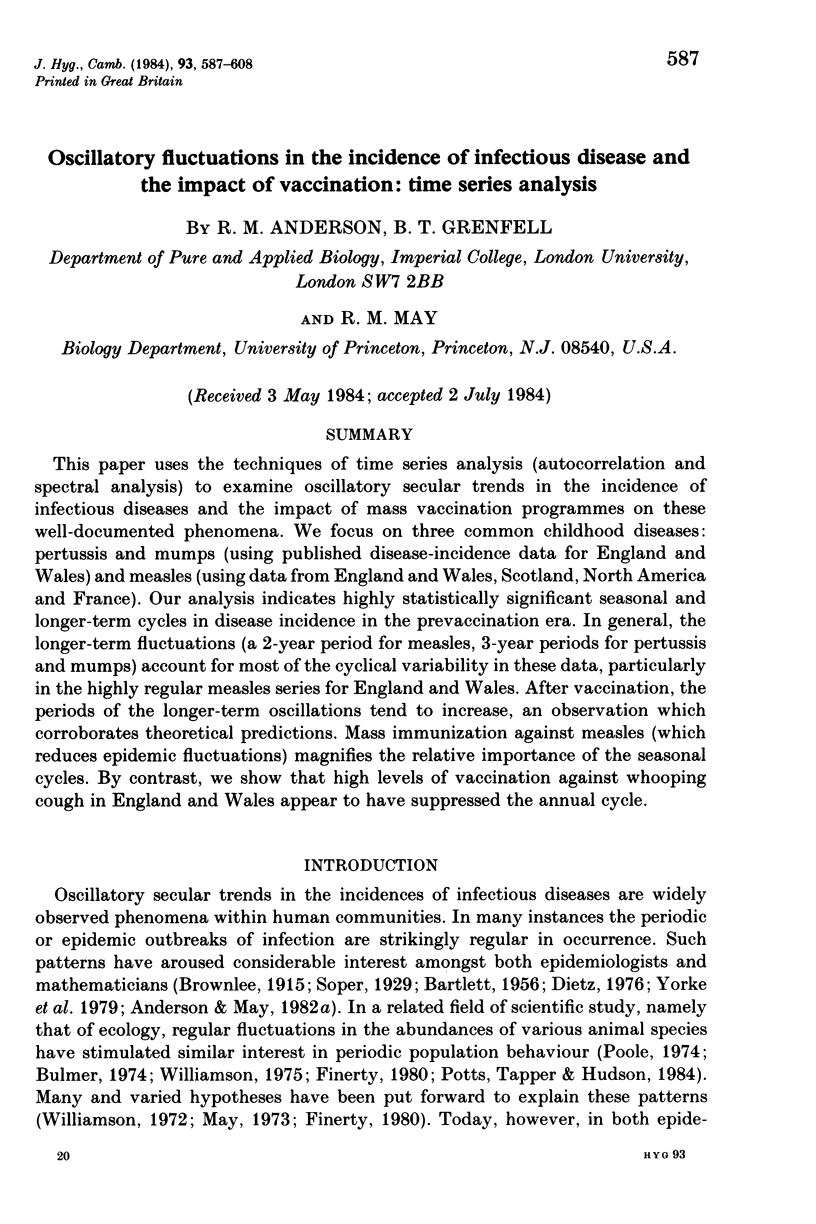
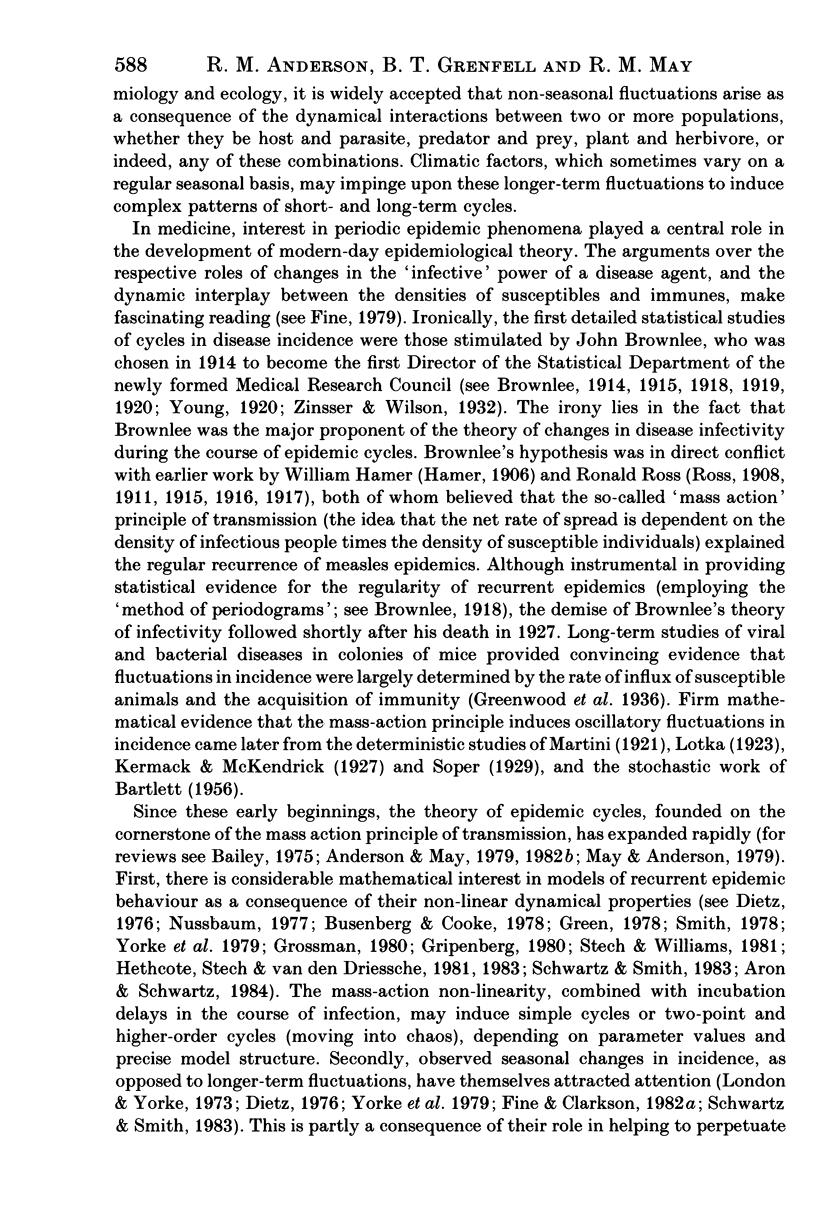
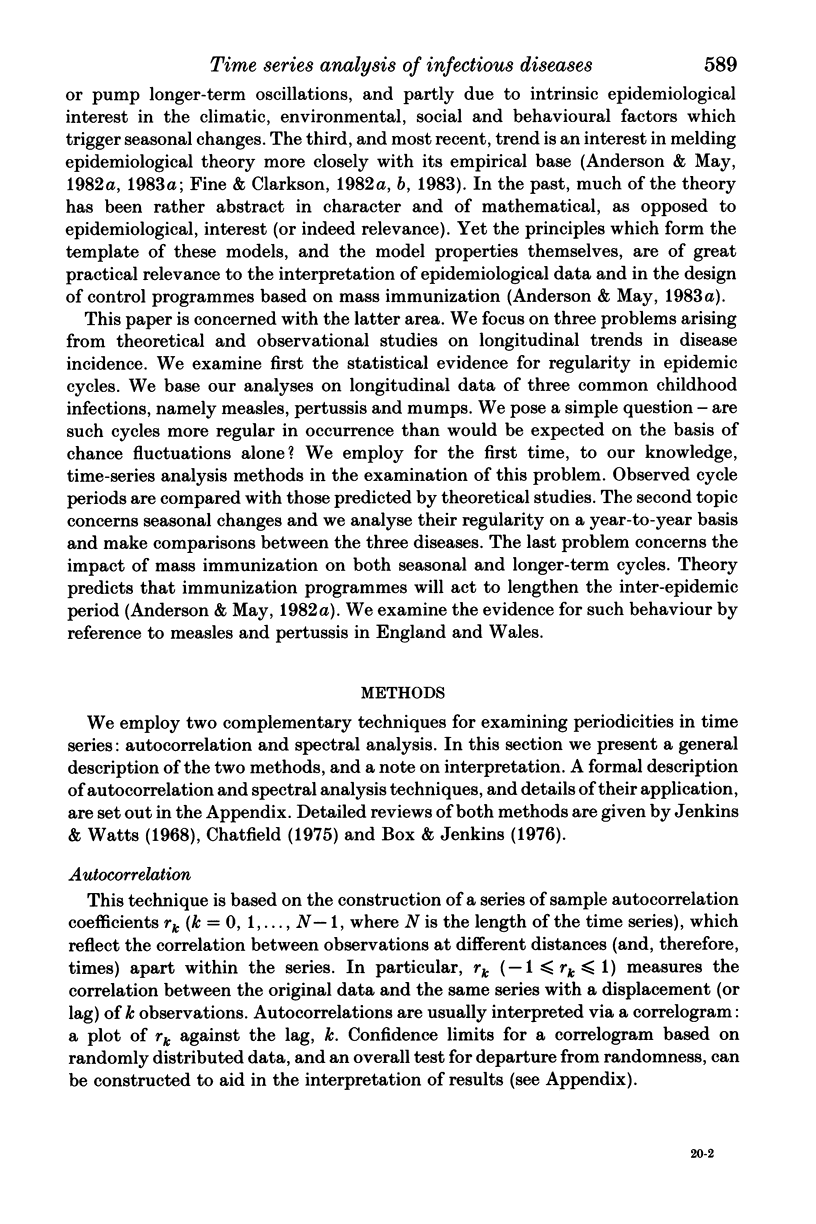
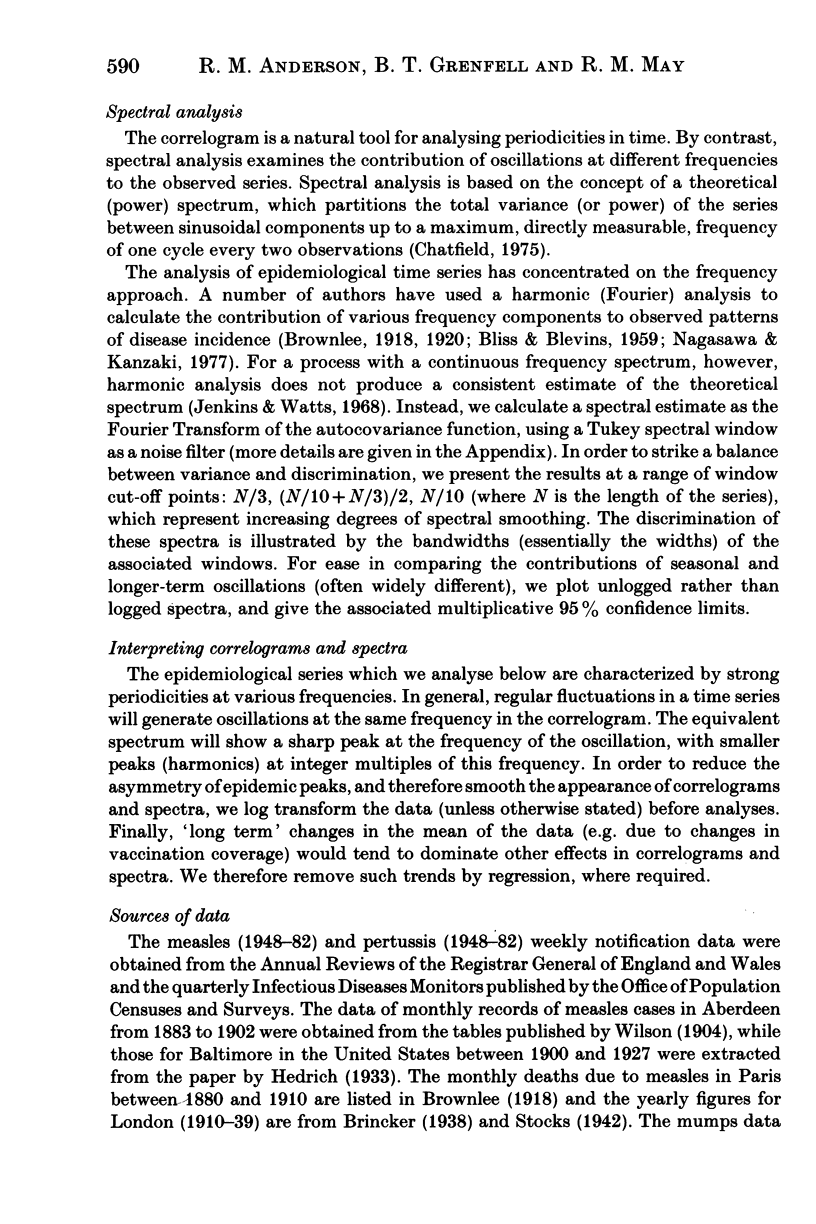
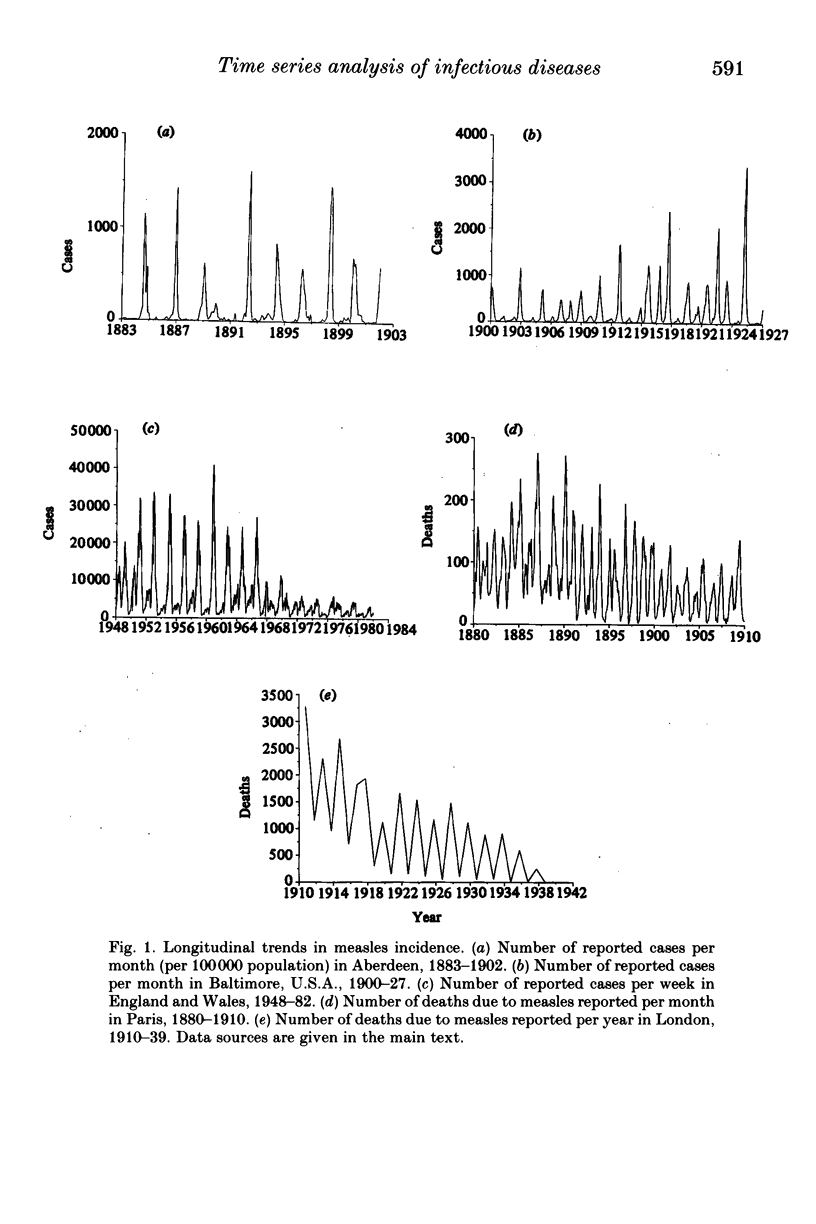
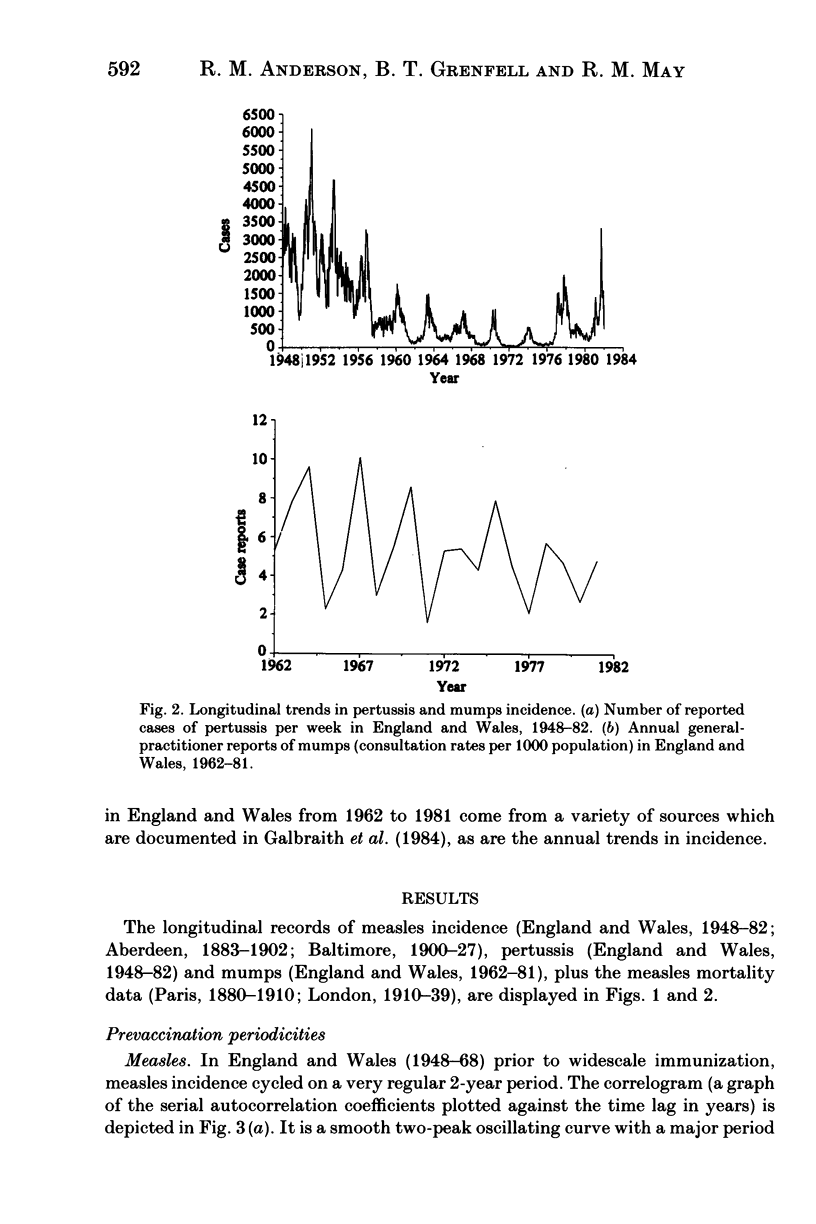
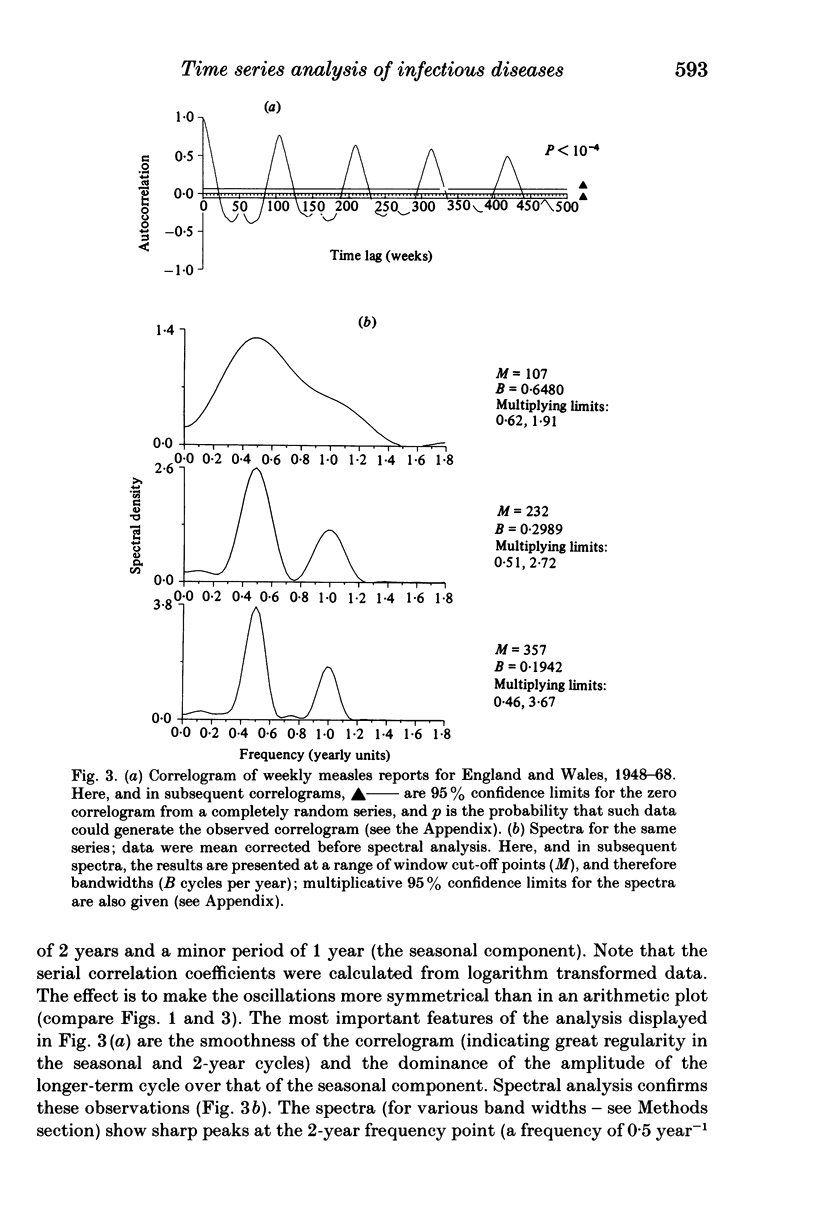
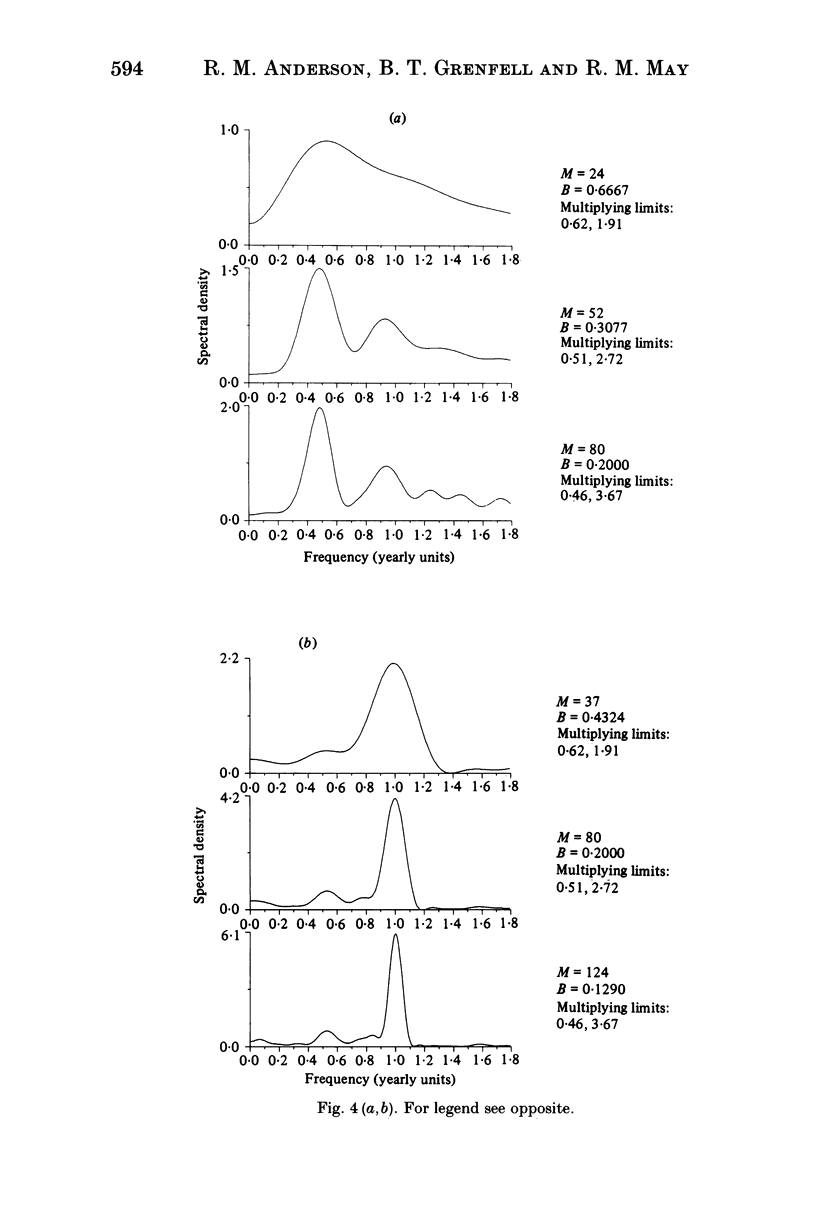
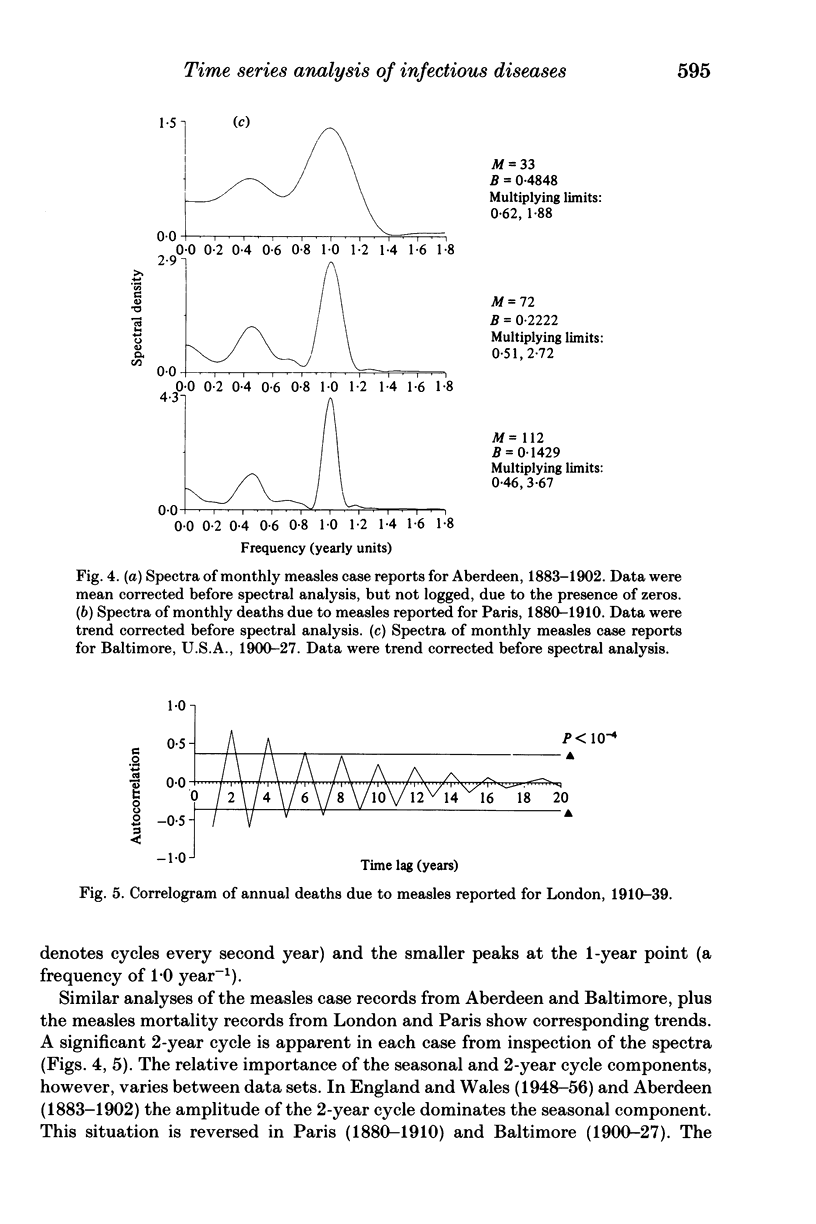
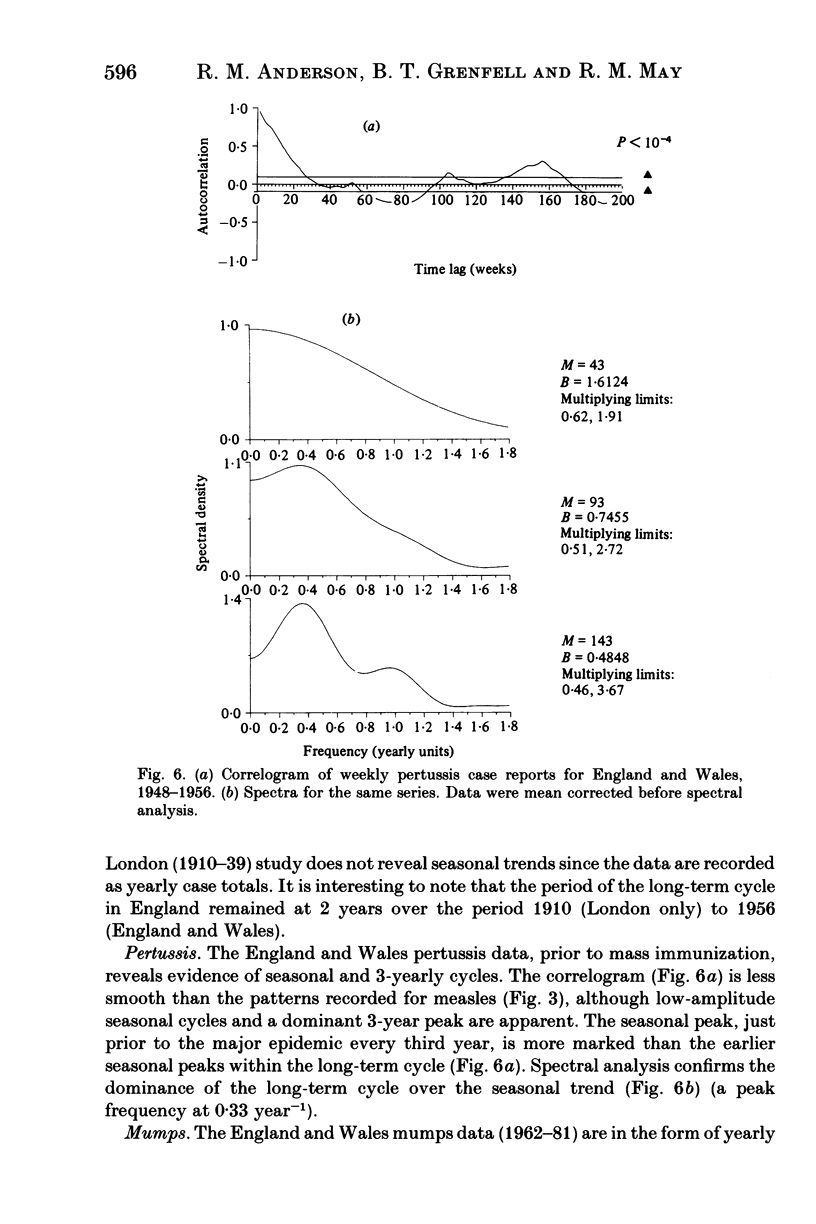
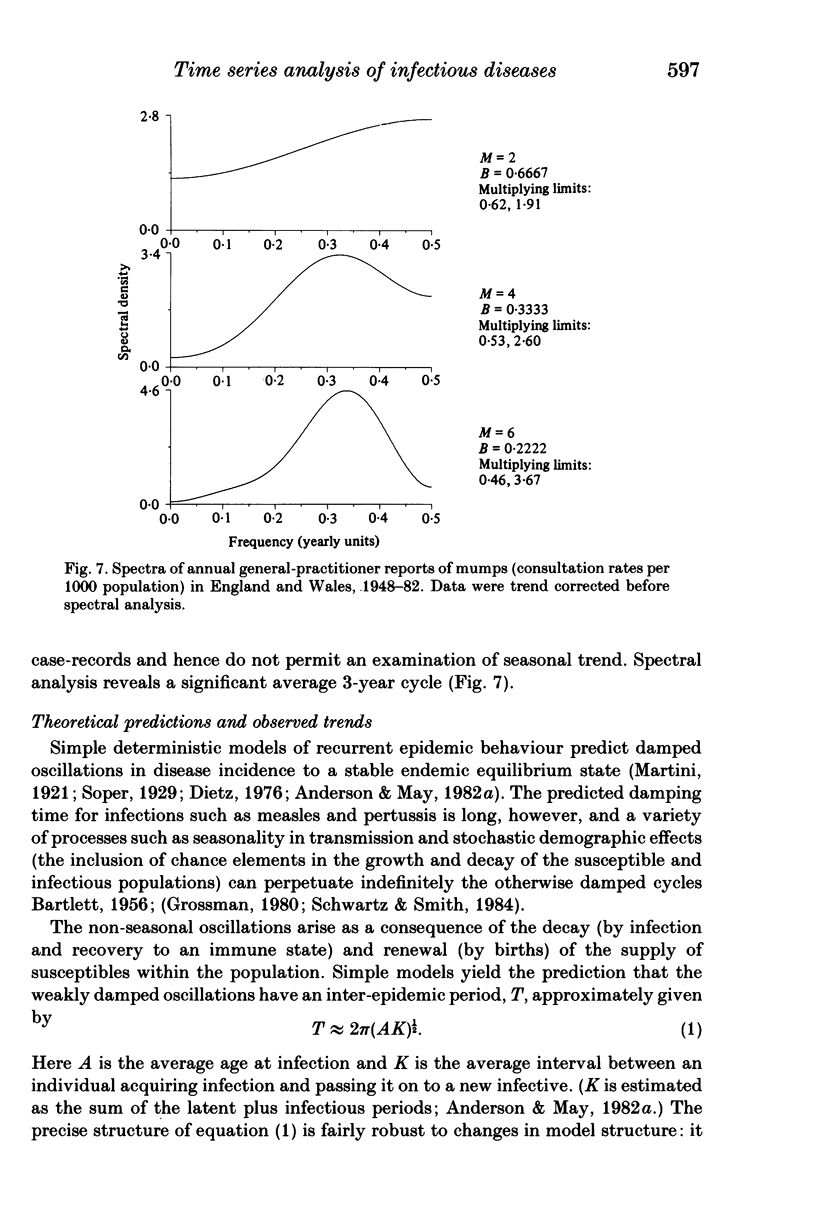
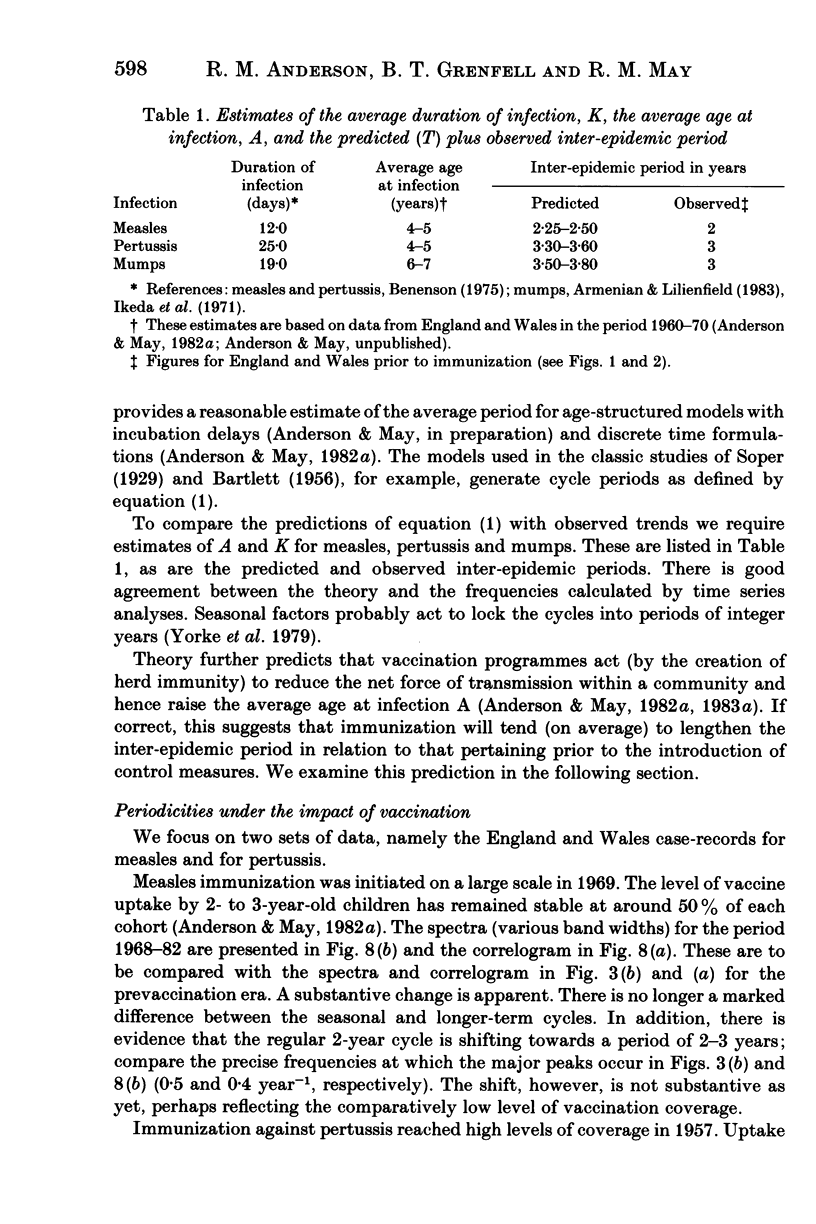
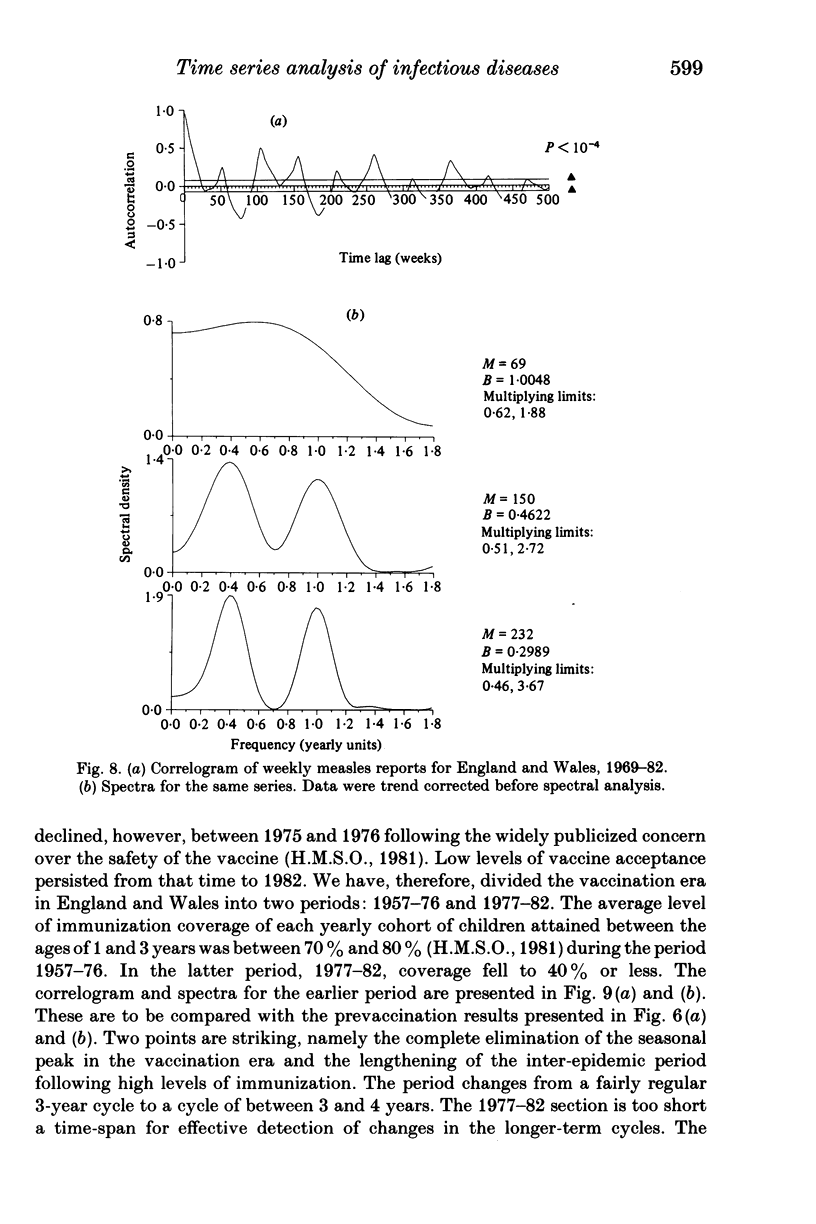
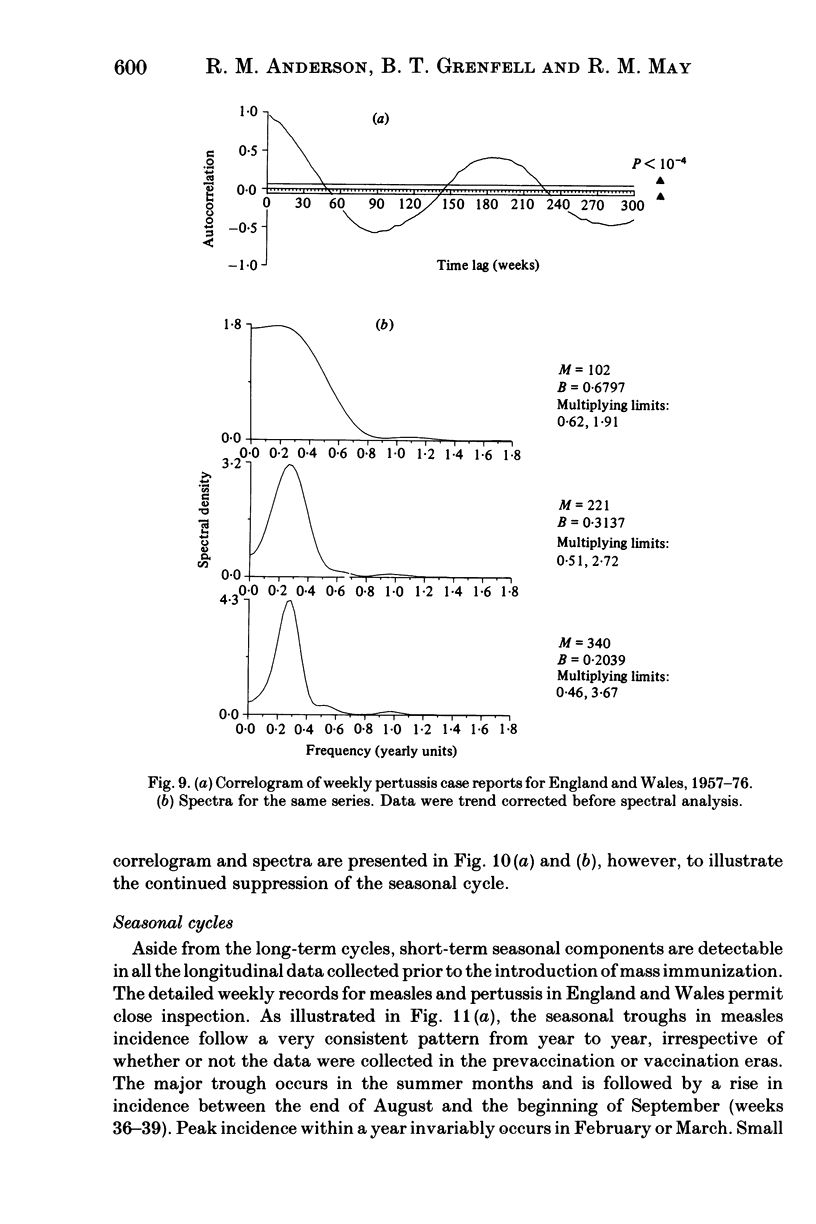
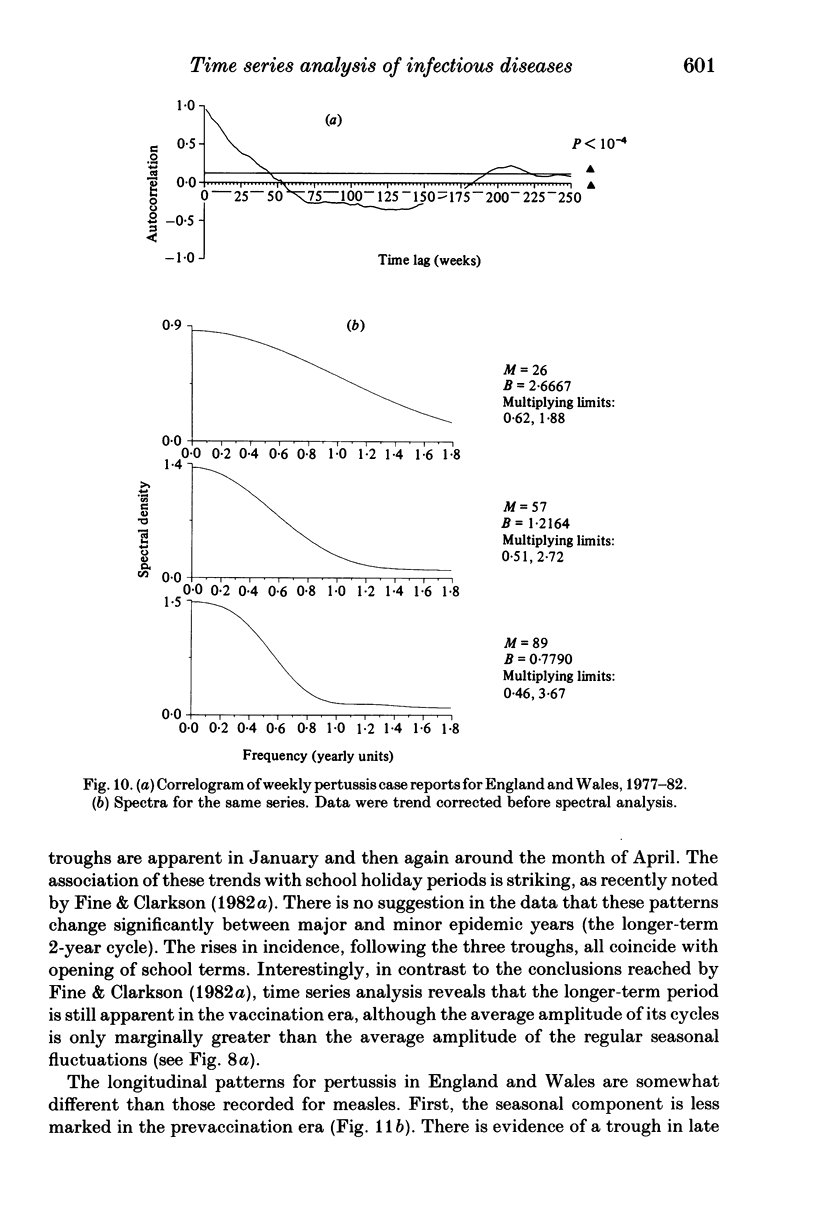
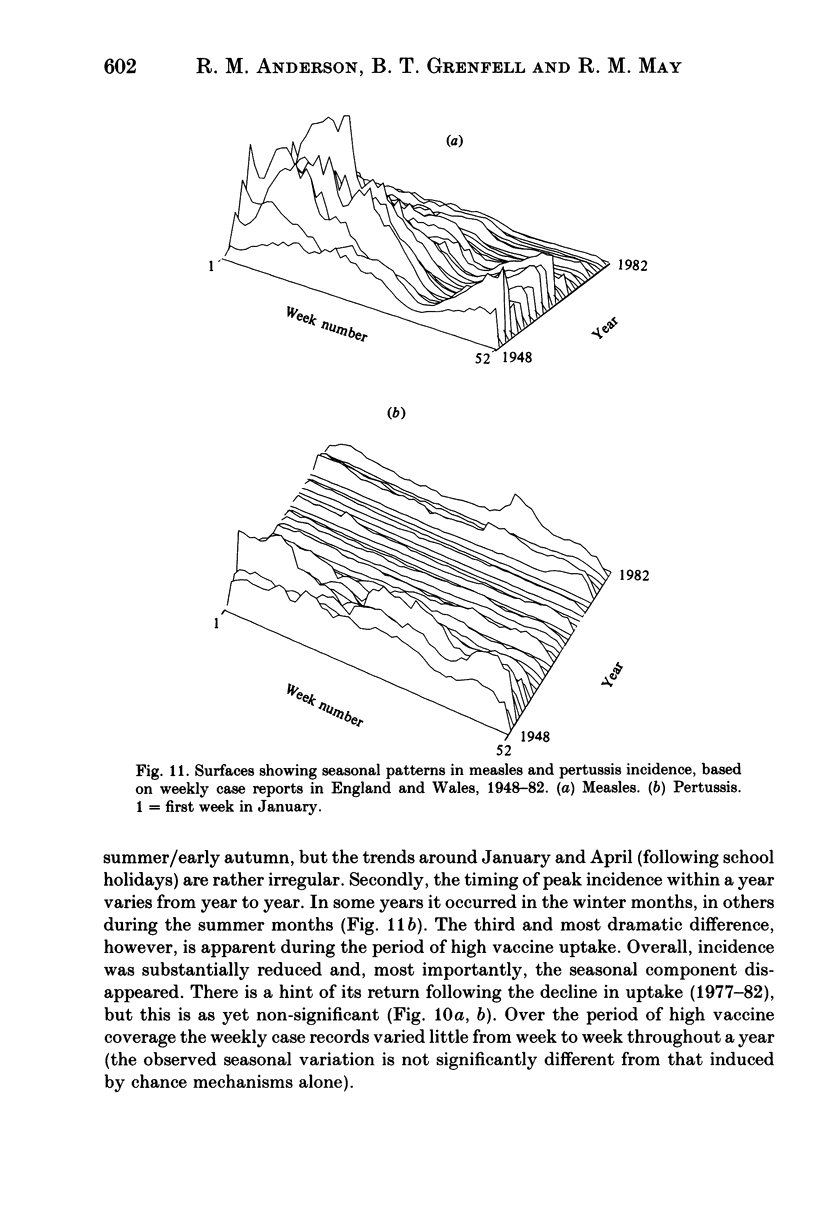
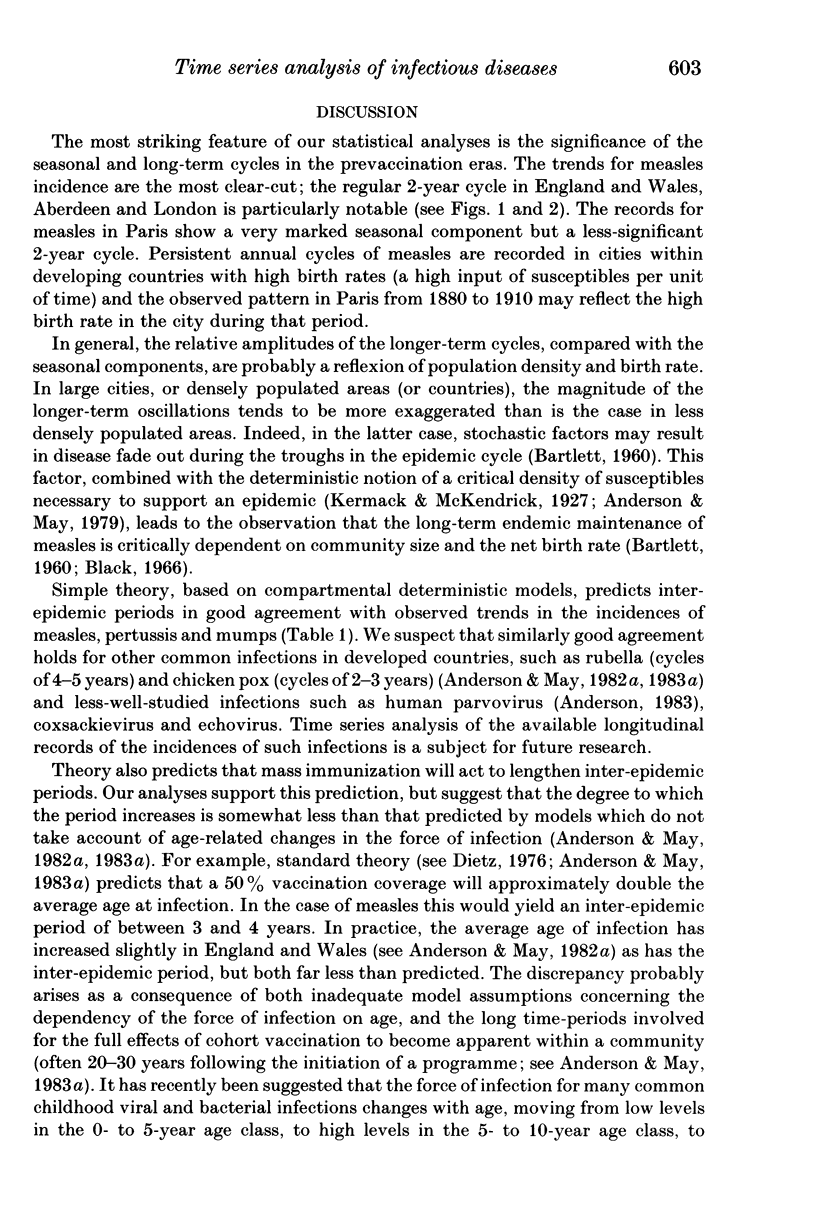
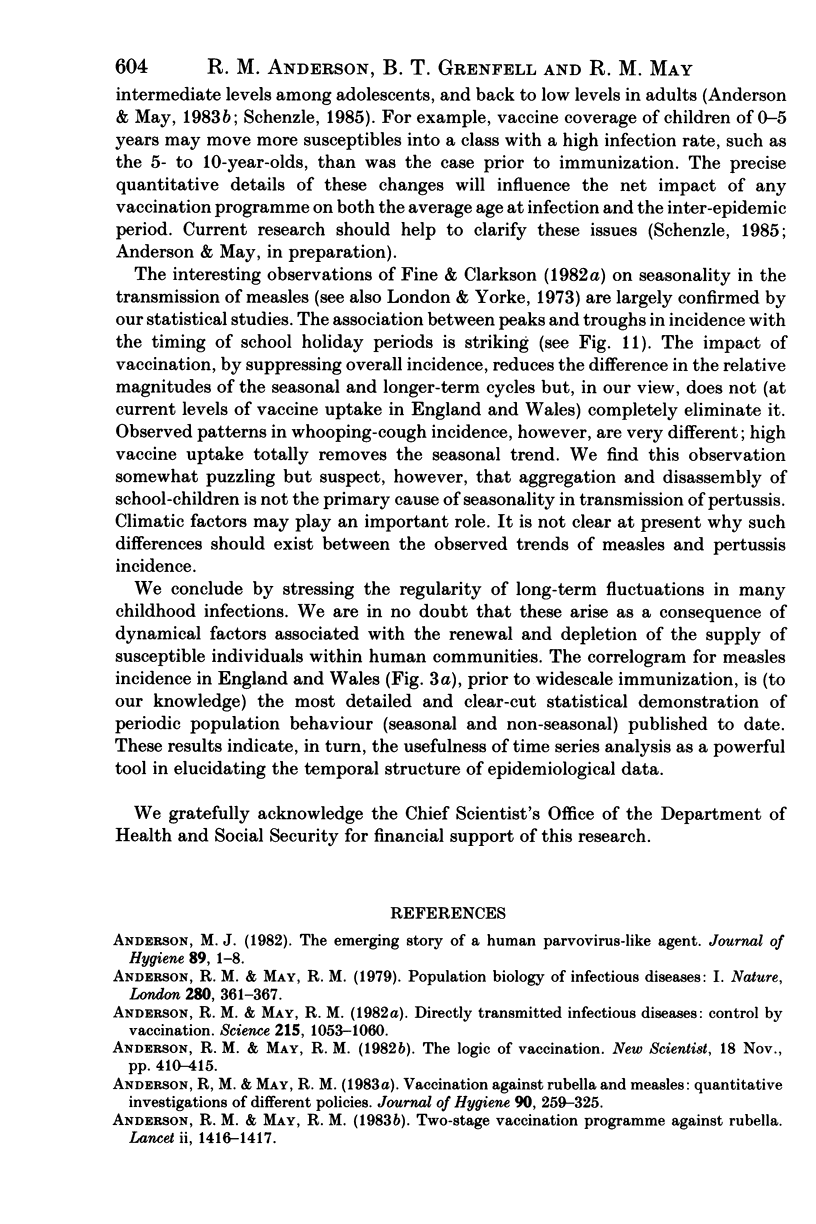
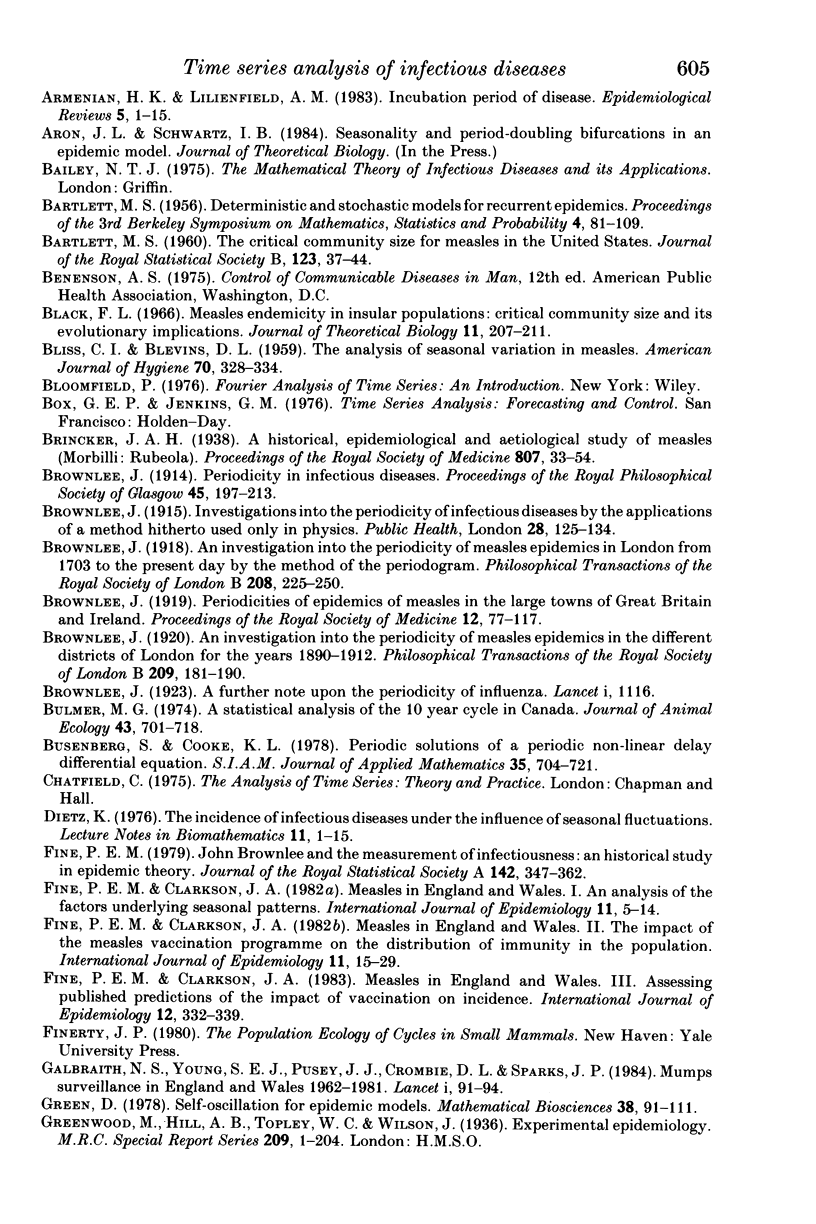
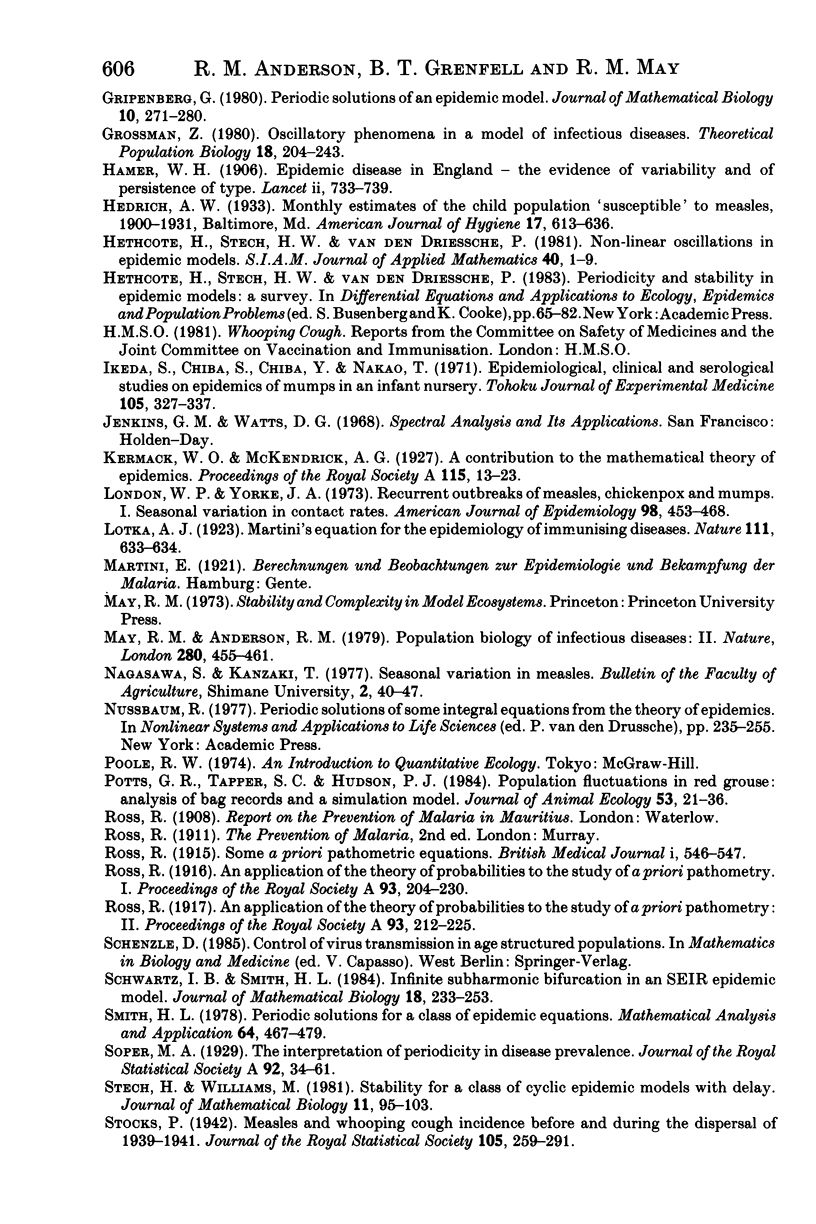
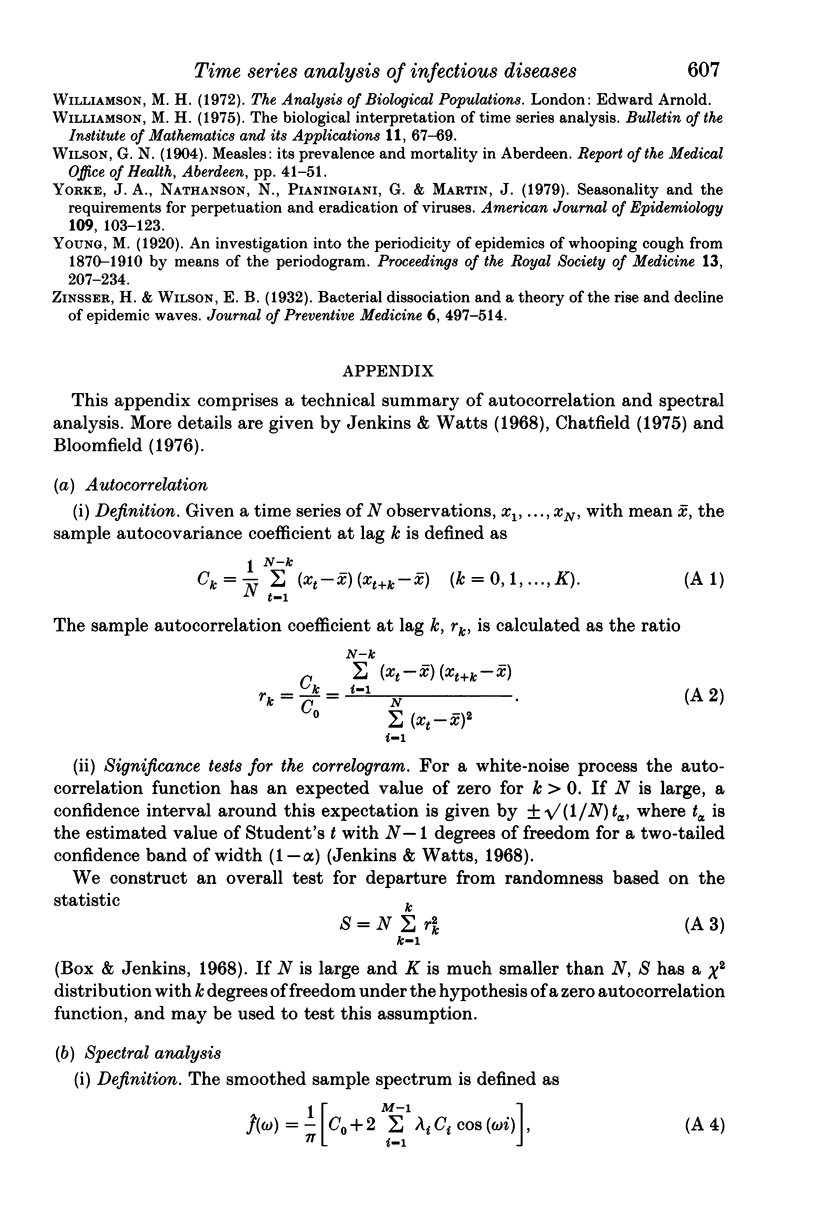
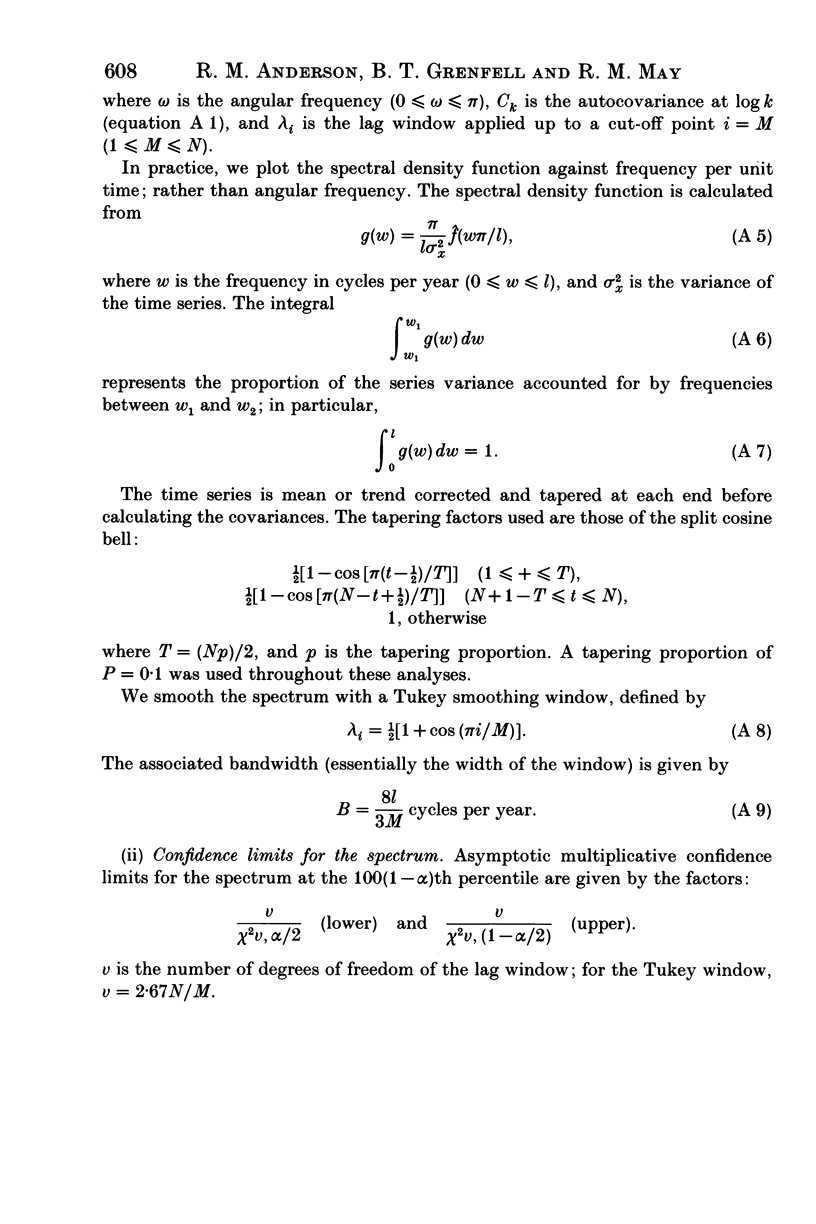
Selected References
These references are in PubMed. This may not be the complete list of references from this article.
- Anderson M. J. The emerging story of a human parvovirus-like agent. J Hyg (Lond) 1982 Aug;89(1):1–8. doi: 10.1017/s0022172400070480. [DOI] [PMC free article] [PubMed] [Google Scholar]
- Anderson R. M., May R. M. Directly transmitted infections diseases: control by vaccination. Science. 1982 Feb 26;215(4536):1053–1060. doi: 10.1126/science.7063839. [DOI] [PubMed] [Google Scholar]
- Anderson R. M., May R. M. Population biology of infectious diseases: Part I. Nature. 1979 Aug 2;280(5721):361–367. doi: 10.1038/280361a0. [DOI] [PubMed] [Google Scholar]
- Anderson R. M., May R. M. Two-stage vaccination programme against rubella. Lancet. 1983 Dec 17;2(8364):1416–1417. doi: 10.1016/s0140-6736(83)90939-x. [DOI] [PubMed] [Google Scholar]
- Anderson R. M., May R. M. Vaccination against rubella and measles: quantitative investigations of different policies. J Hyg (Lond) 1983 Apr;90(2):259–325. doi: 10.1017/s002217240002893x. [DOI] [PMC free article] [PubMed] [Google Scholar]
- Anderson Roy, May Robert. The logic of vaccination. New Sci. 1982 Nov 18;96(1332):410–415. [PubMed] [Google Scholar]
- Armenian H. K., Lilienfeld A. M. Incubation period of disease. Epidemiol Rev. 1983;5:1–15. doi: 10.1093/oxfordjournals.epirev.a036254. [DOI] [PubMed] [Google Scholar]
- BLISS C. I., BLEVINS D. L. The analysis of seasonal variation in measles. Am J Hyg. 1959 Nov;70:328–334. doi: 10.1093/oxfordjournals.aje.a120081. [DOI] [PubMed] [Google Scholar]
- Black F. L. Measles endemicity in insular populations: critical community size and its evolutionary implication. J Theor Biol. 1966 Jul;11(2):207–211. doi: 10.1016/0022-5193(66)90161-5. [DOI] [PubMed] [Google Scholar]
- Brownlee J. Periodicities of Epidemics of Measles in the Large Towns of Great Britain and Ireland. Proc R Soc Med. 1919;12(SECT):77–120. [PMC free article] [PubMed] [Google Scholar]
- Fine P. E., Clarkson J. A. Measles in England and Wales--I: An analysis of factors underlying seasonal patterns. Int J Epidemiol. 1982 Mar;11(1):5–14. doi: 10.1093/ije/11.1.5. [DOI] [PubMed] [Google Scholar]
- Fine P. E., Clarkson J. A. Measles in England and Wales--II: The impact of the measles vaccination programme on the distribution of immunity in the population. Int J Epidemiol. 1982 Mar;11(1):15–25. doi: 10.1093/ije/11.1.15. [DOI] [PubMed] [Google Scholar]
- Fine P. E., Clarkson J. A. Measles in England and Wales--III: Assessing published predictions of the impact of vaccination on incidence. Int J Epidemiol. 1983 Sep;12(3):332–339. doi: 10.1093/ije/12.3.332. [DOI] [PubMed] [Google Scholar]
- Galbraith N. S., Young S. E., Pusey J. J., Crombie D. L., Sparks J. P. Mumps surveillance in England and Wales 1962-81. Lancet. 1984 Jan 14;1(8368):91–94. doi: 10.1016/s0140-6736(84)90015-1. [DOI] [PubMed] [Google Scholar]
- Gripenberg G. Periodic solutions of an epidemic model. J Math Biol. 1980 Nov;10(3):271–280. doi: 10.1007/BF00276986. [DOI] [PubMed] [Google Scholar]
- Grossman Z. Oscillatory phenomena in a model of infectious diseases. Theor Popul Biol. 1980 Oct;18(2):204–243. doi: 10.1016/0040-5809(80)90050-7. [DOI] [PubMed] [Google Scholar]
- Ikeda S., Chiba S., Chiba Y., Nakao T., Fukui S. Epidemiological, clinical and serological studies on epidemic of mumps in an infant nursery. Tohoku J Exp Med. 1971 Dec;105(4):327–337. doi: 10.1620/tjem.105.327. [DOI] [PubMed] [Google Scholar]
- London W. P., Yorke J. A. Recurrent outbreaks of measles, chickenpox and mumps. I. Seasonal variation in contact rates. Am J Epidemiol. 1973 Dec;98(6):453–468. doi: 10.1093/oxfordjournals.aje.a121575. [DOI] [PubMed] [Google Scholar]
- May R. M., Anderson R. M. Population biology of infectious diseases: Part II. Nature. 1979 Aug 9;280(5722):455–461. doi: 10.1038/280455a0. [DOI] [PubMed] [Google Scholar]
- Schwartz I. B., Smith H. L. Infinite subharmonic bifurcation in an SEIR epidemic model. J Math Biol. 1983;18(3):233–253. doi: 10.1007/BF00276090. [DOI] [PubMed] [Google Scholar]
- Yorke J. A., Nathanson N., Pianigiani G., Martin J. Seasonality and the requirements for perpetuation and eradication of viruses in populations. Am J Epidemiol. 1979 Feb;109(2):103–123. doi: 10.1093/oxfordjournals.aje.a112666. [DOI] [PubMed] [Google Scholar]


